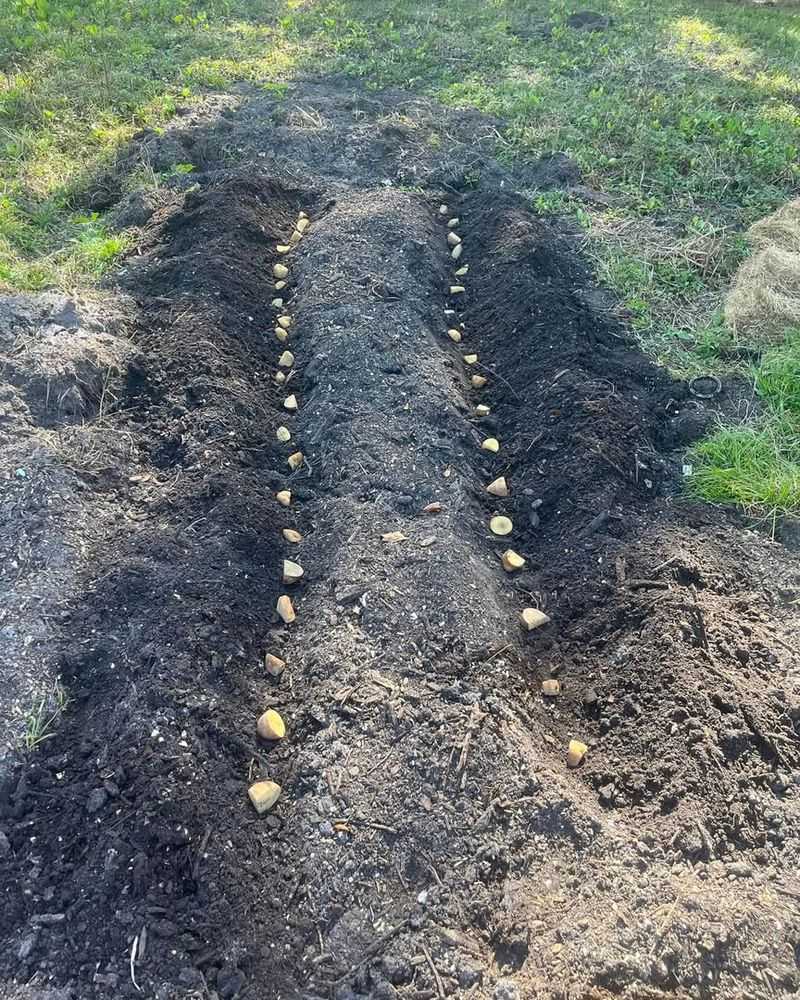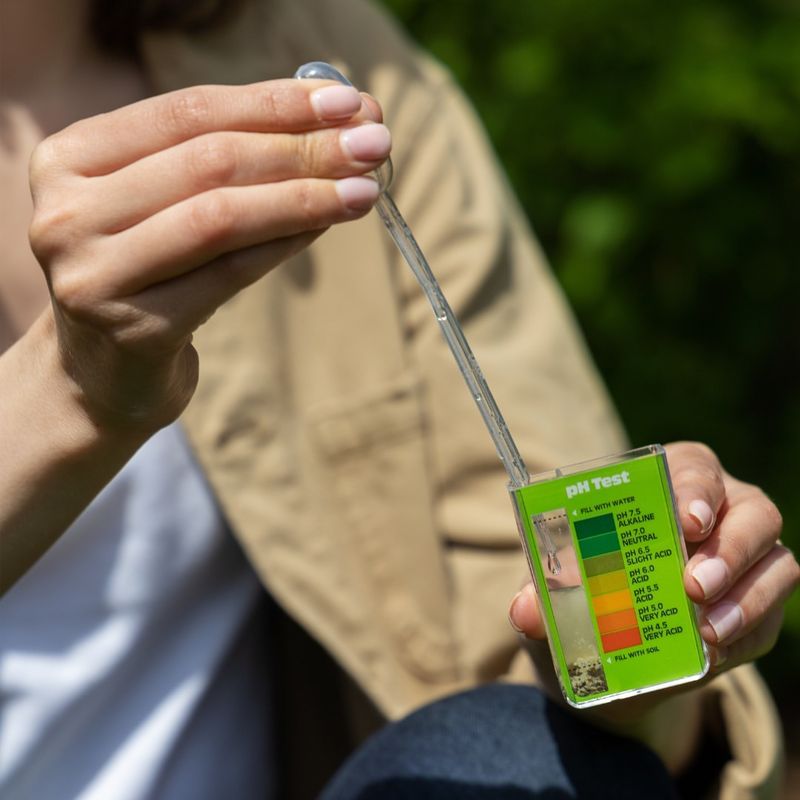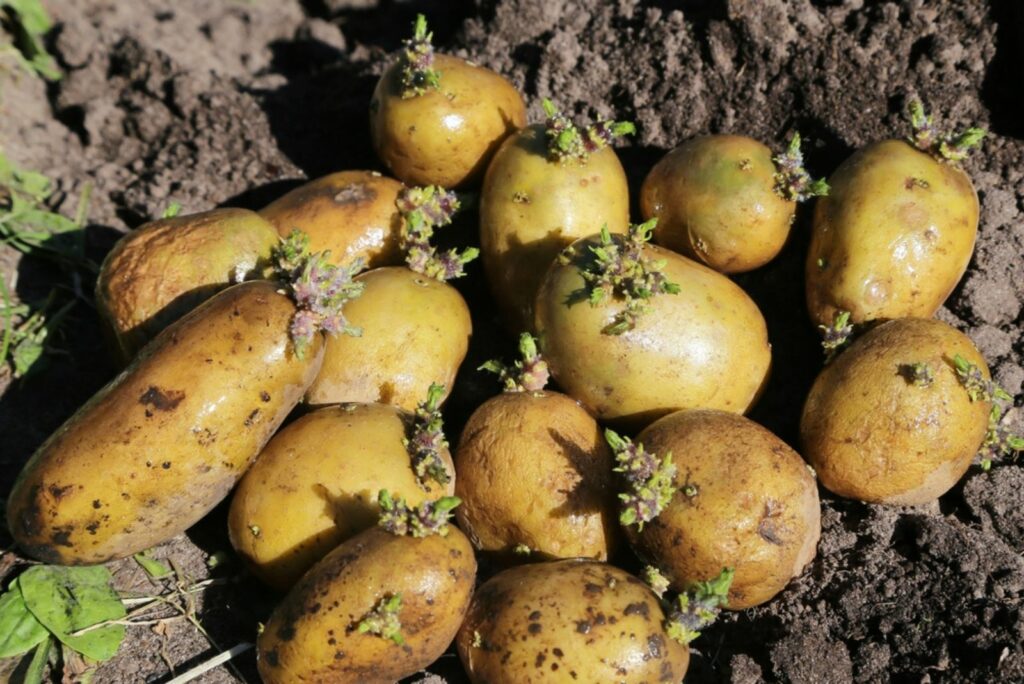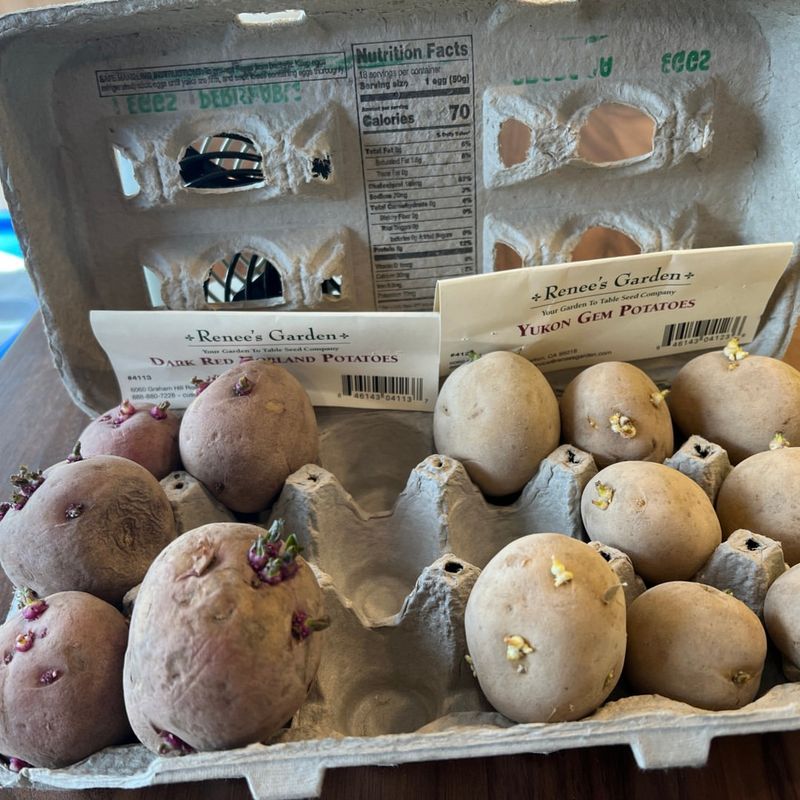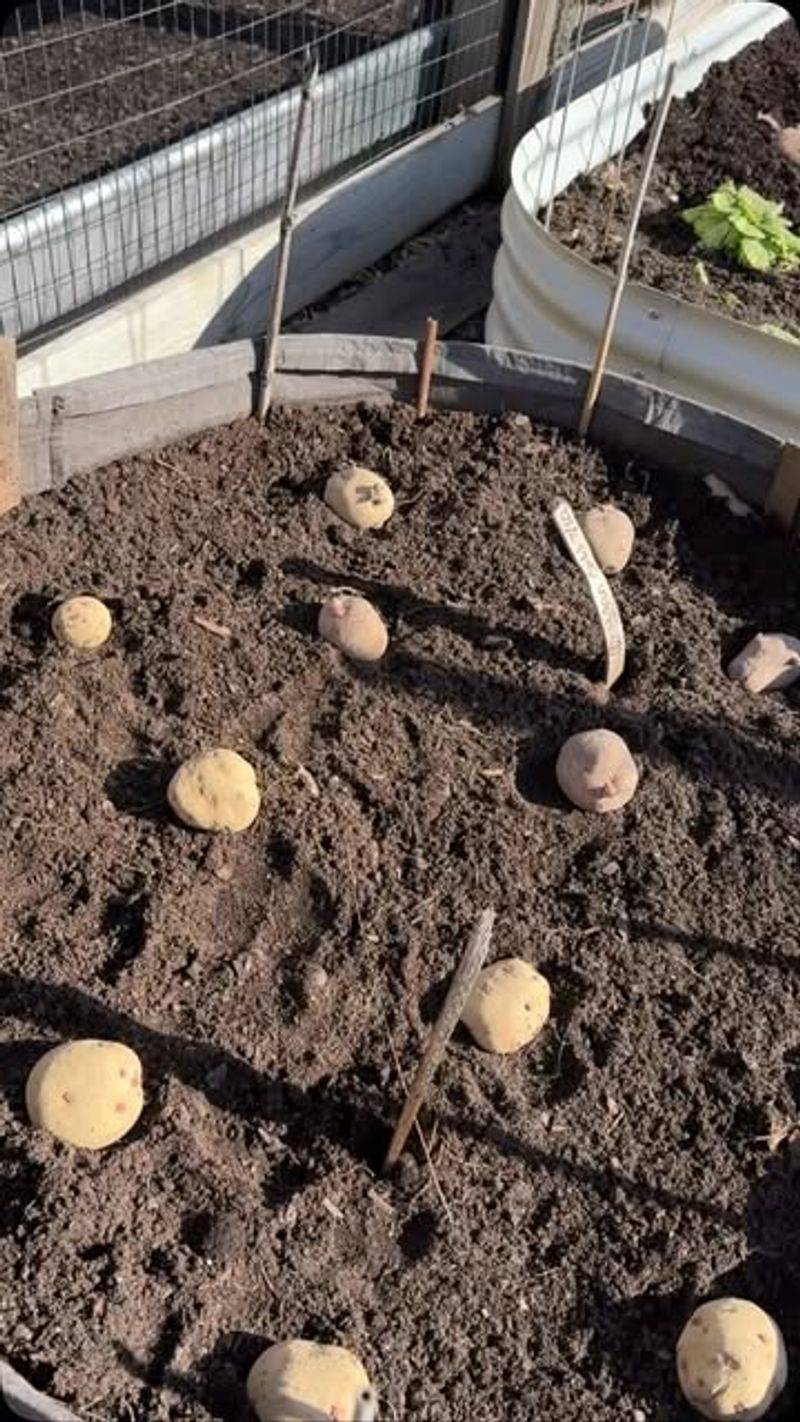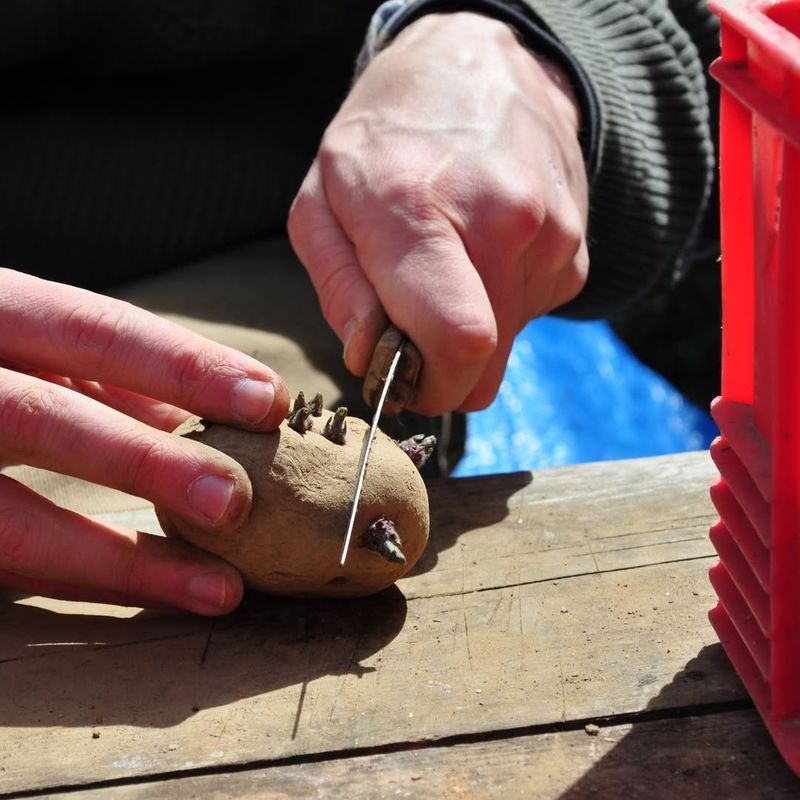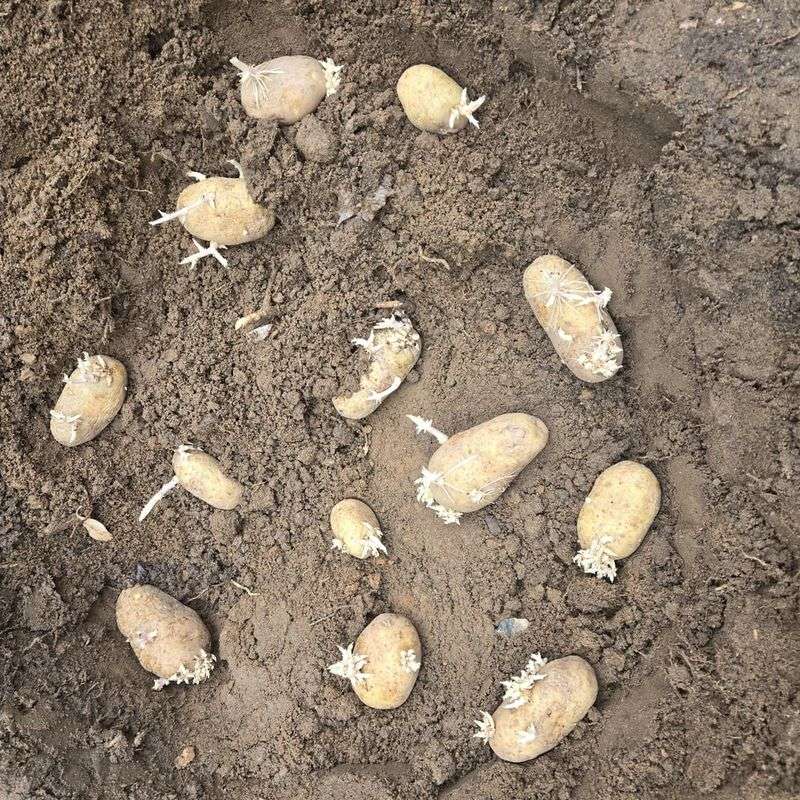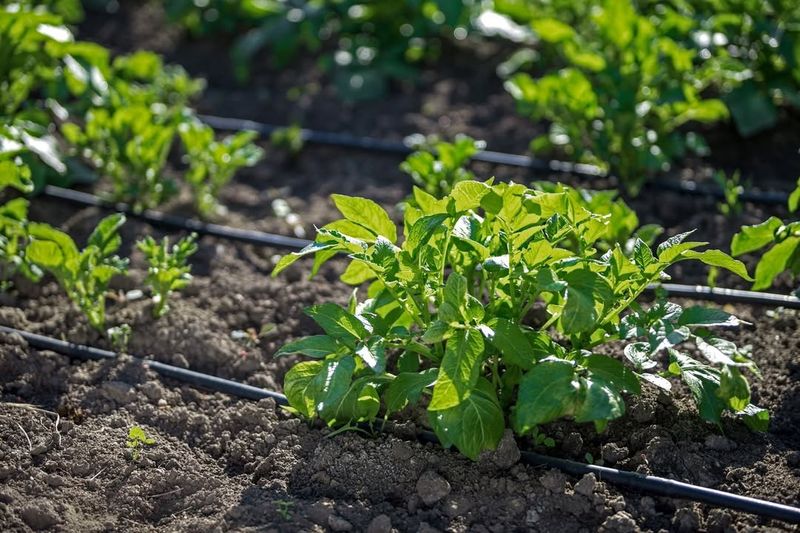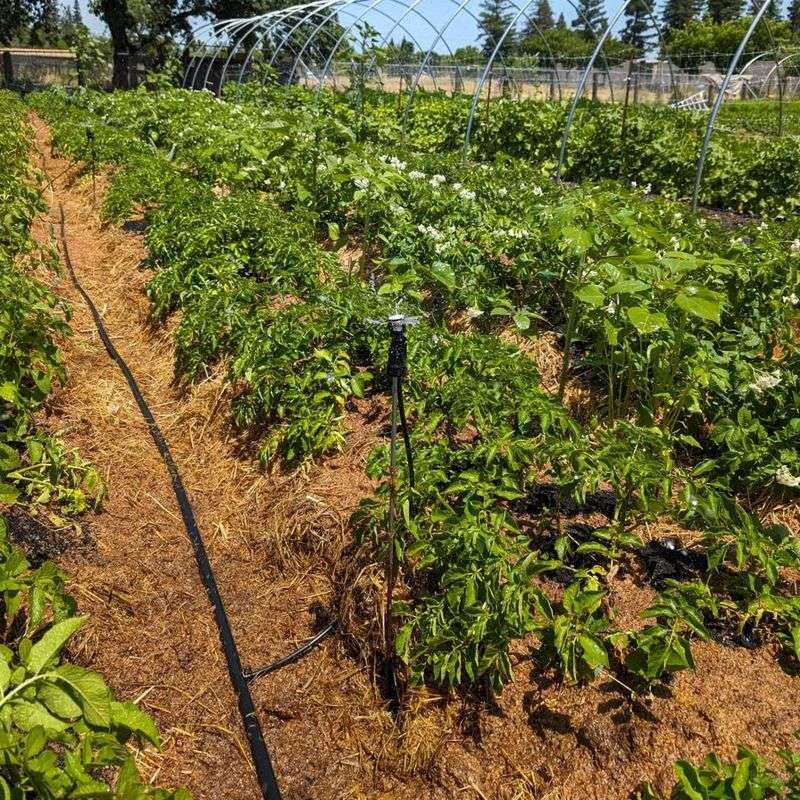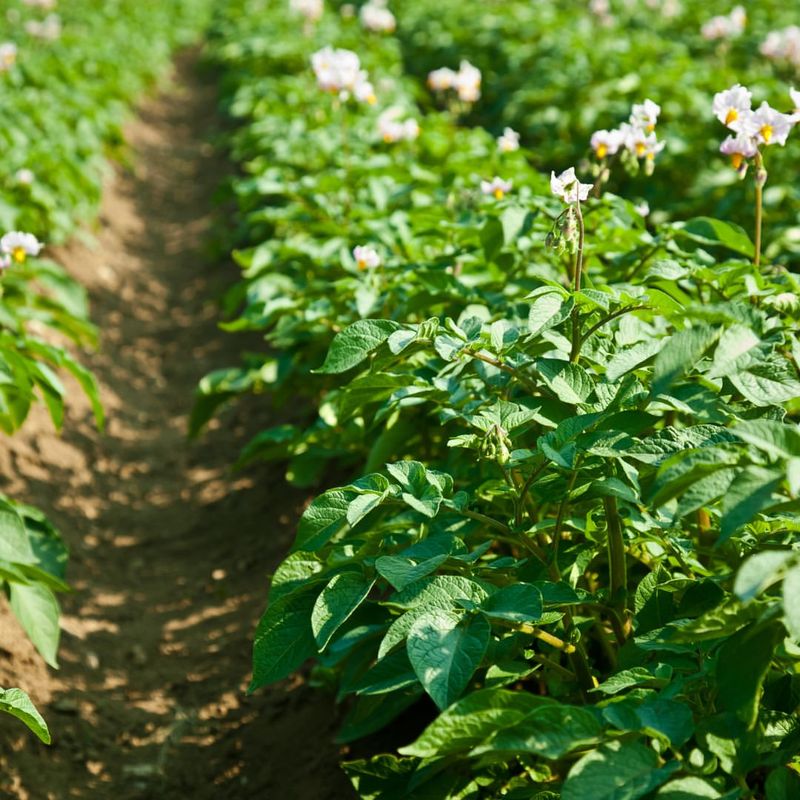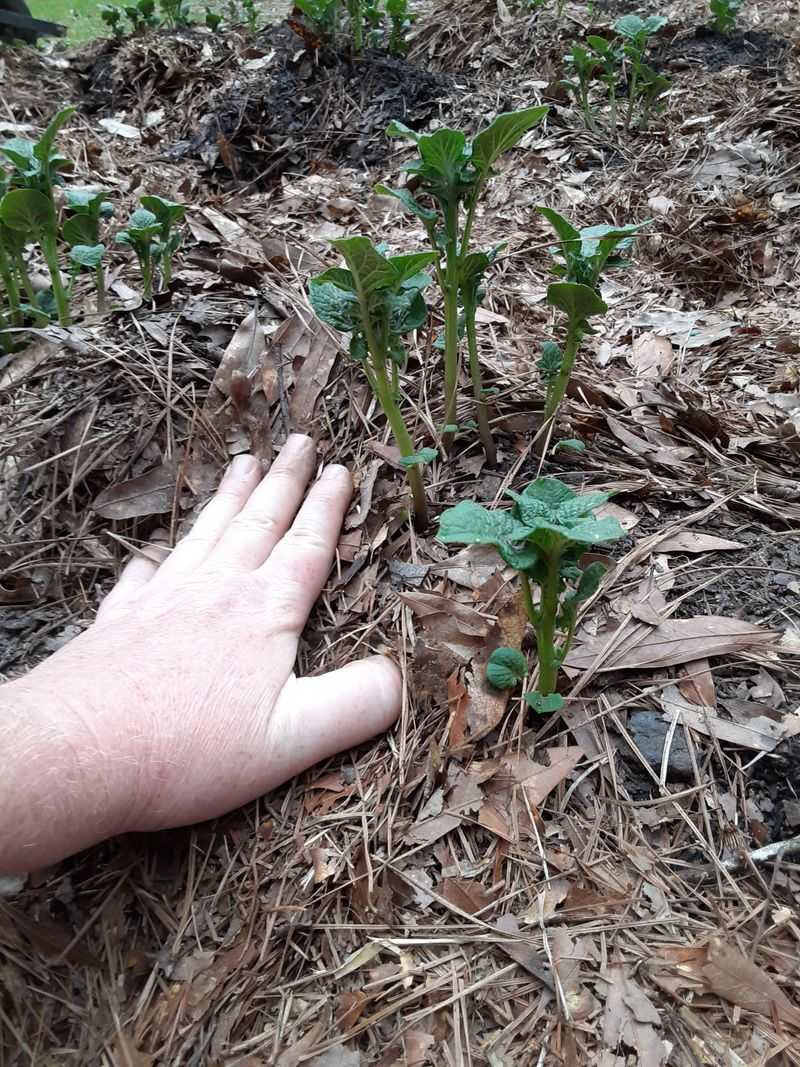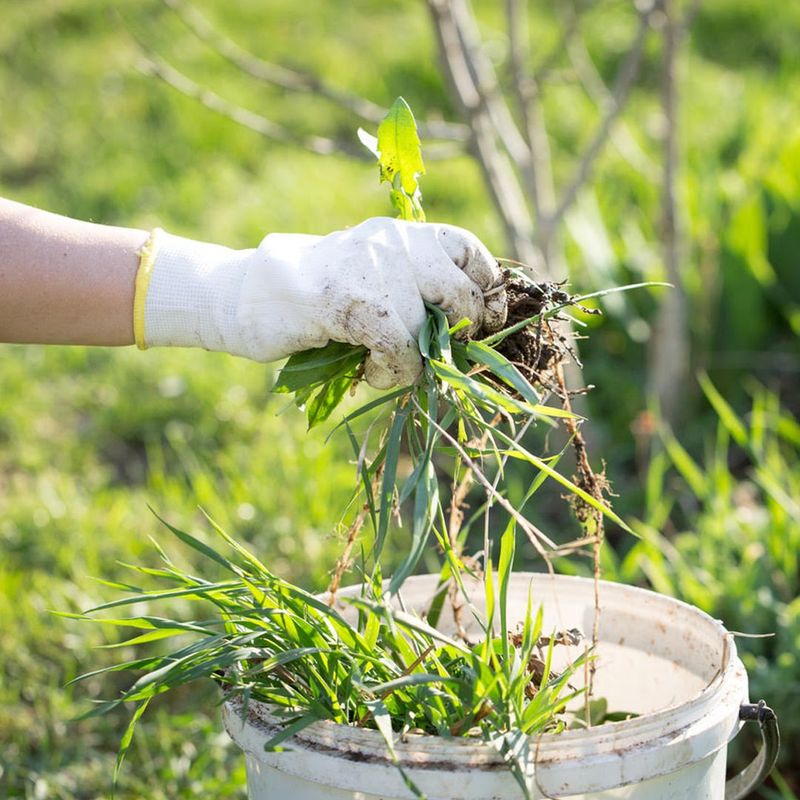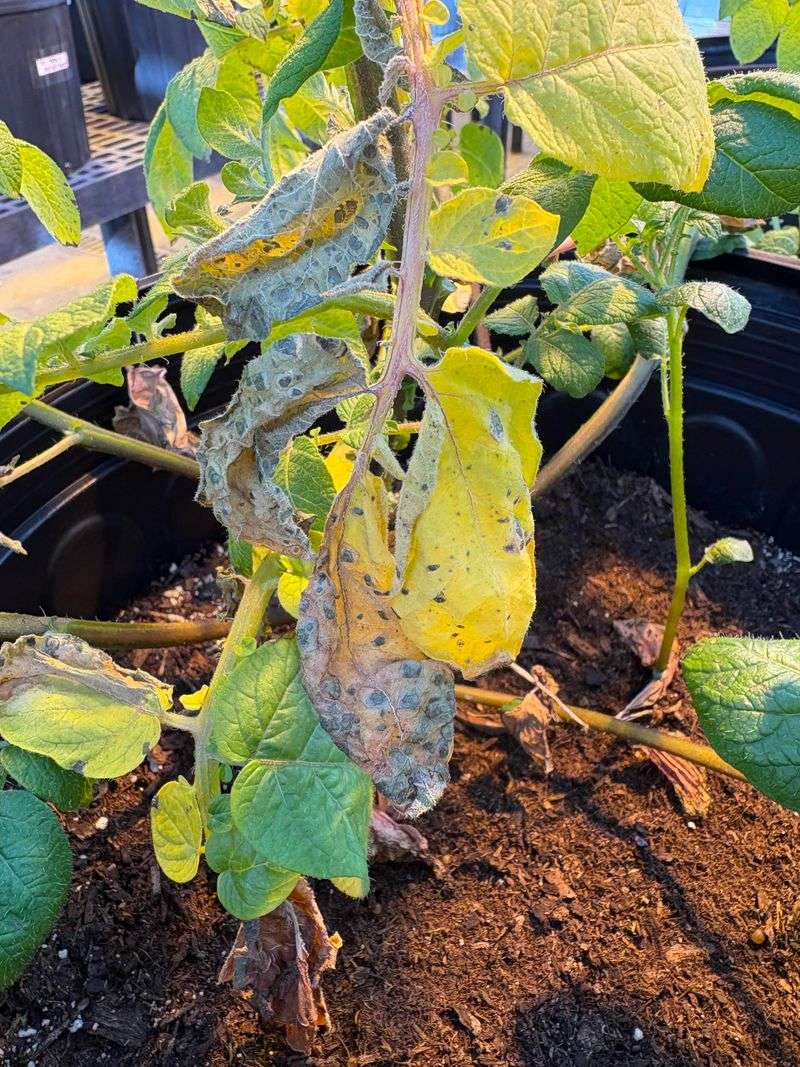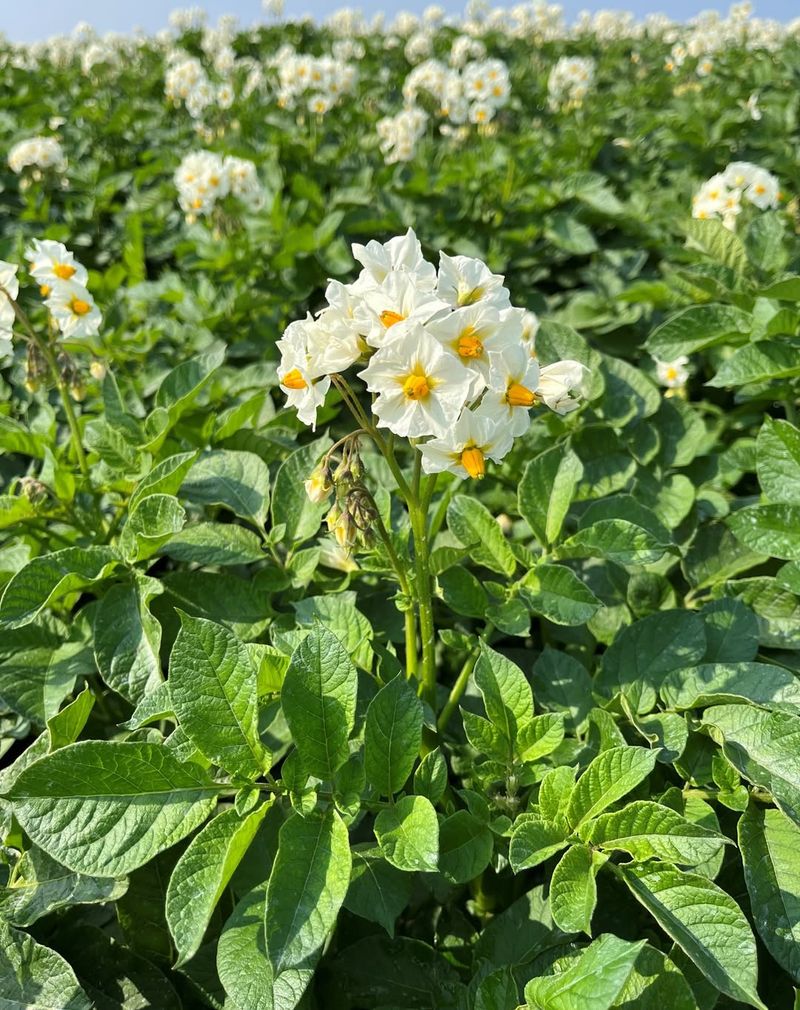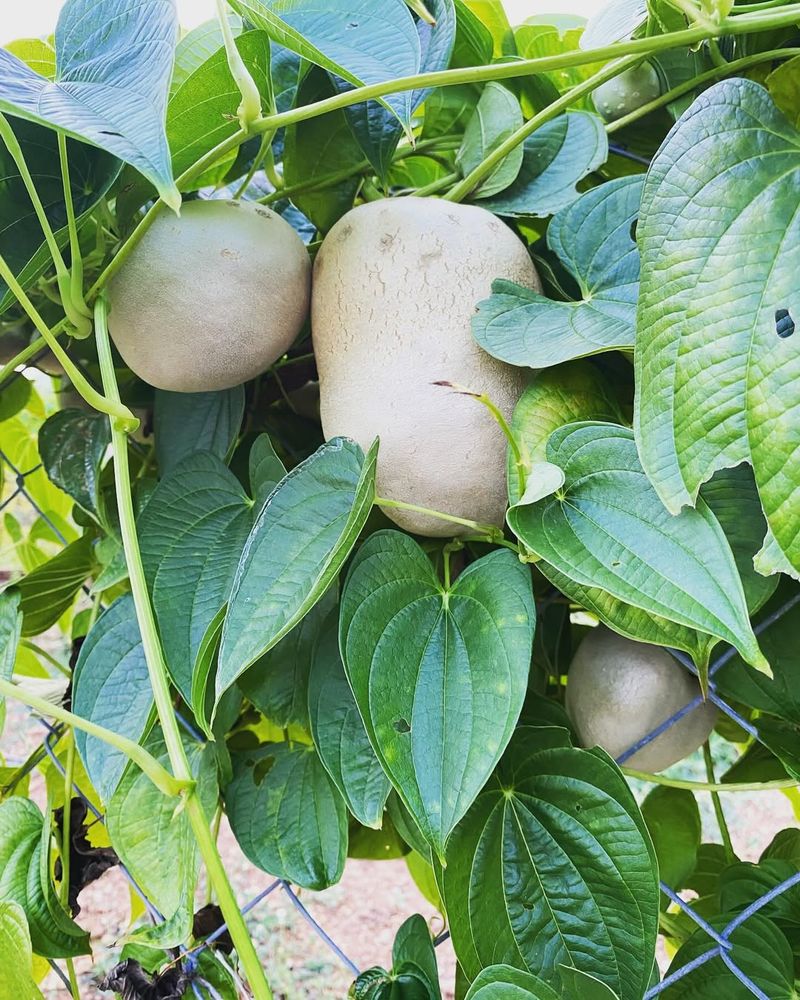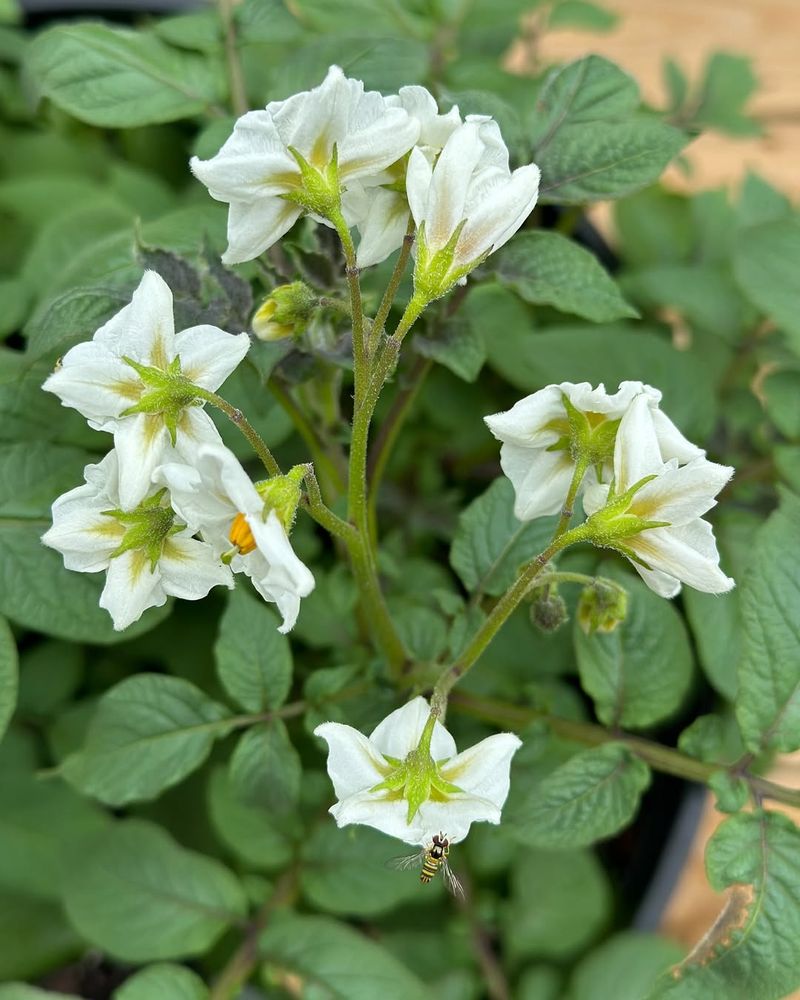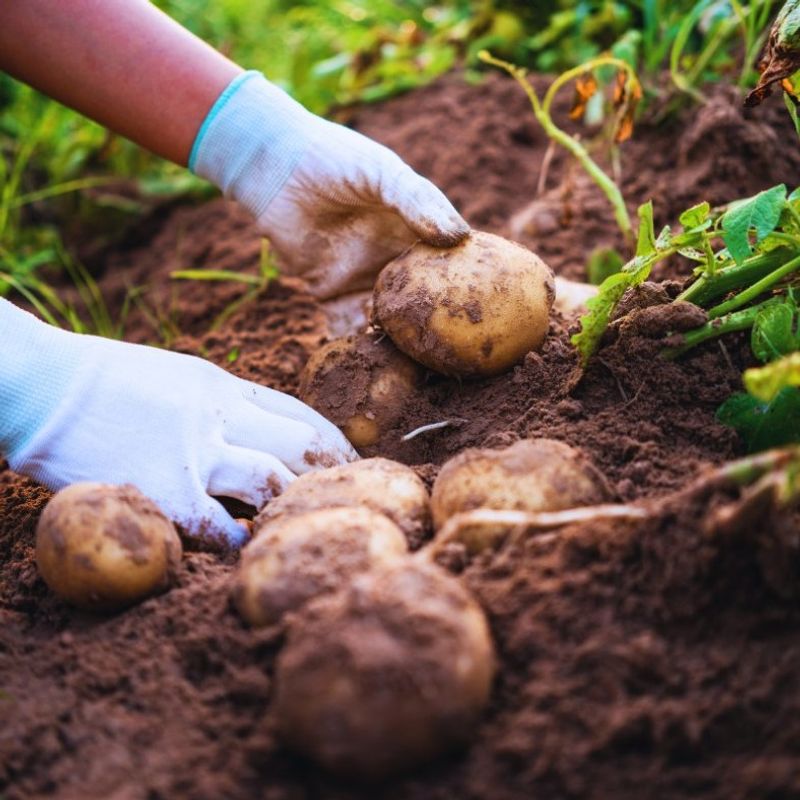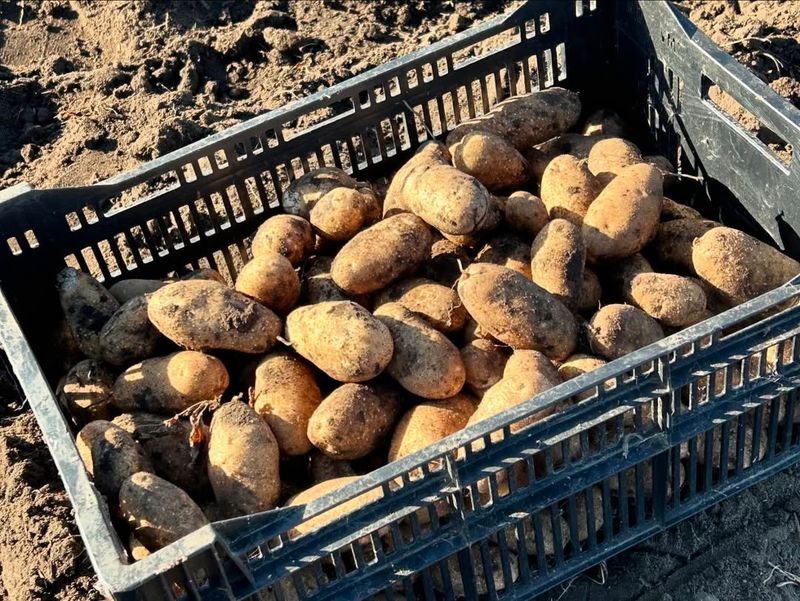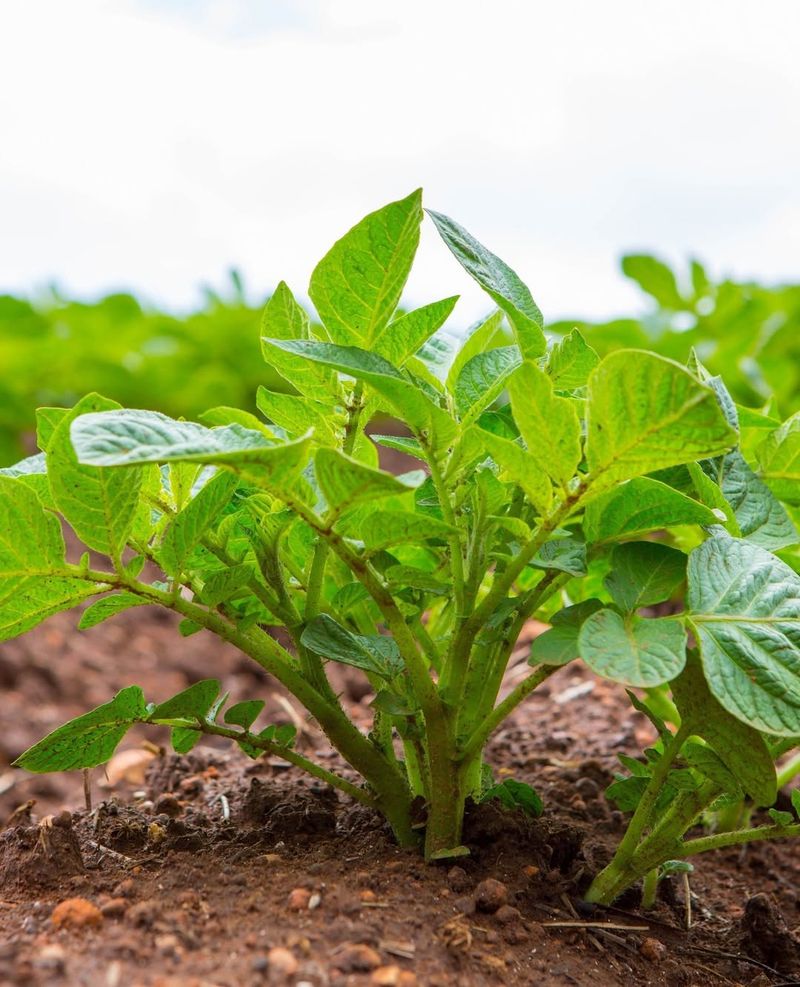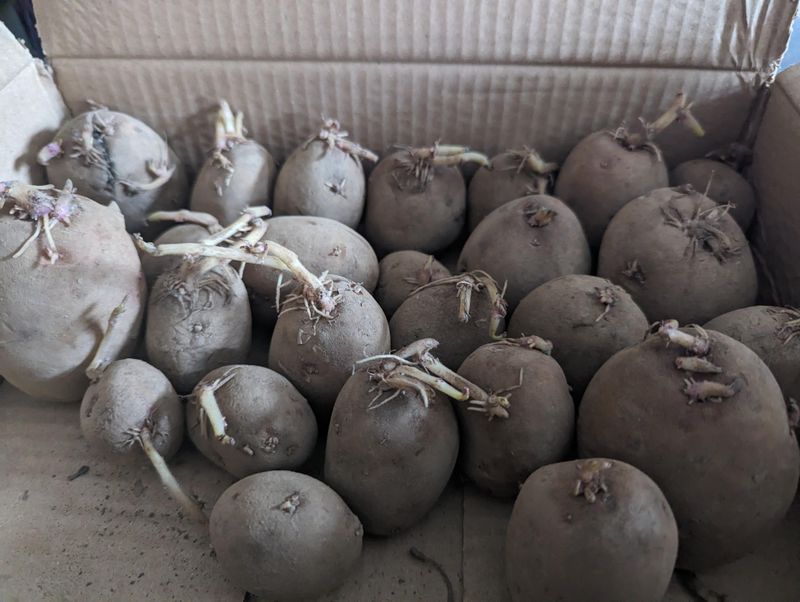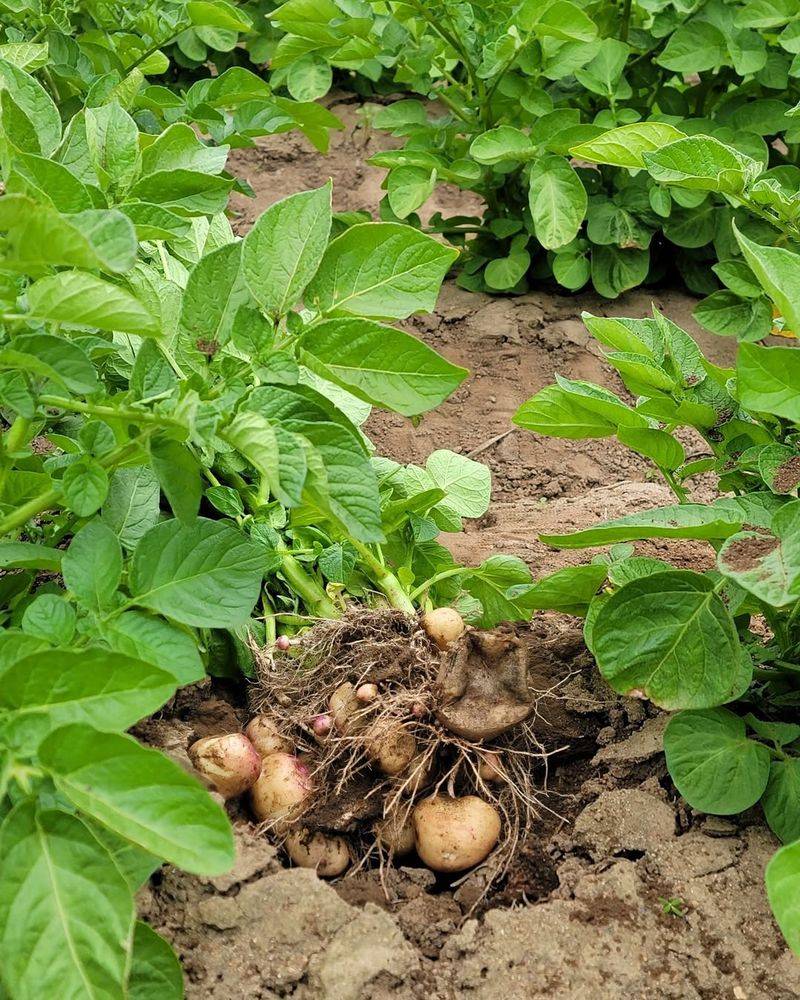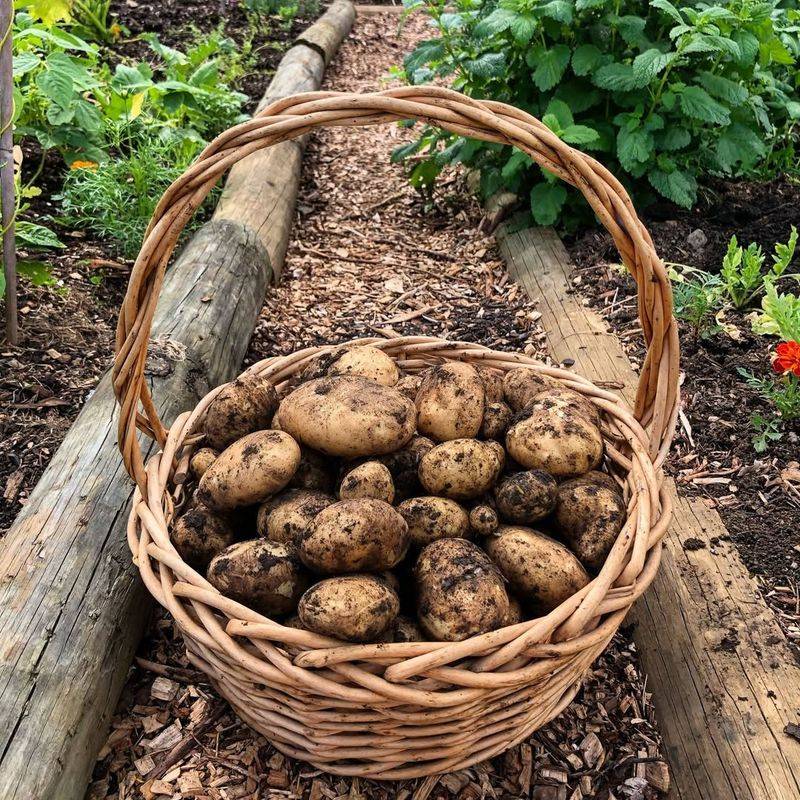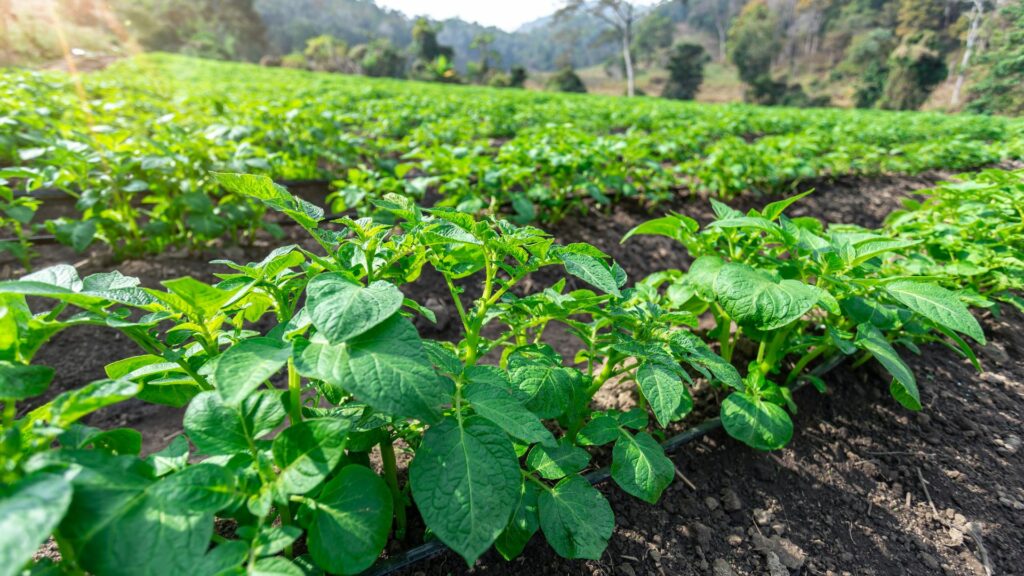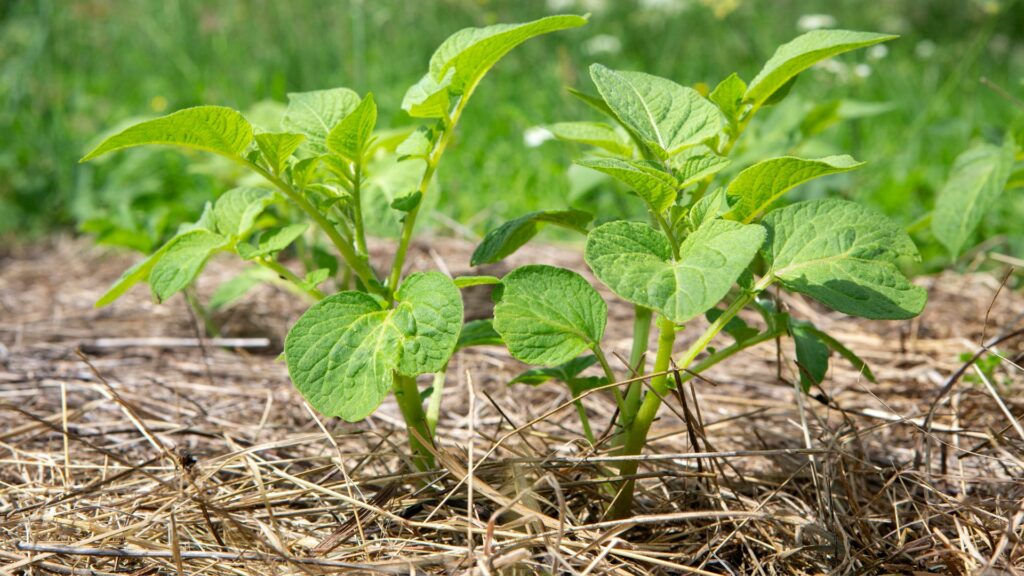Planting seed potatoes isn’t complicated, but getting a big, healthy harvest takes more than just tossing them in the ground and hoping for the best. From picking the right spuds to knowing when (and how deep) to plant, there are a few key things that can make or break your crop.
If you want buckets of homegrown potatoes, this is the place to start. Here’s 28 simple tips to help you do it right and grow a bumper crop you’ll actually be proud of.
1. Choose The Right Spot
Finding the perfect location is crucial. Potatoes thrive in sunny spots with well-drained soil. They dislike wet feet, so avoid areas prone to waterlogging. Amend your soil with organic matter if it feels heavy. It’s like setting the stage for a grand performance, where the right conditions ensure the star shines.
Check for good air circulation to prevent diseases. Avoid spots where tomatoes have grown recently to prevent pest issues. Remember, the success of your potato crop begins with the ground they grow in.
2. Test The Soil PH
Understanding your soil’s pH is like knowing the mood of your garden. Potatoes prefer slightly acidic soil, with a pH of 5.0 to 6.0. Use a soil pH tester, easily found at garden centers, to check. If it’s too alkaline, consider adding sulfur.
Conversely, if it’s too acidic, lime can balance it out. This step is akin to a health check-up, ensuring everything is set for optimal growth. Knowing this helps you tailor the soil conditions to make a cozy home for your potatoes.
3. Select The Best Seed Potatoes
Selecting quality seed potatoes is akin to choosing the right cast for a play. Look for certified disease-free potatoes to avoid introducing problems. Steer clear of potatoes that are shriveled or have green spots. The fresher and healthier they are, the better your harvest will be.
It’s like betting on a winning horse. Variety also matters; choose types suited to your climate and taste preferences. Good seed potatoes are the foundation of a successful crop, setting the trajectory for growth.
4. Chit The Seed Potatoes
Encouraging your potatoes to sprout, or chit, is a bit like waking them up from a long nap. Place them in a cool, light place for a couple of weeks until they grow sturdy shoots. This process gives them a head start once they hit the ground.
Think of it as giving them a pep talk before the big game. Keep them safe from frost and direct sunlight while you wait. Chitting is a simple step that can significantly enhance your potatoes’ productivity and vigor.
5. Prepare The Soil
Getting your soil ready is like prepping a canvas before painting. Turn the soil over to a depth of at least 12 inches, removing stones and debris. Add compost or well-rotted manure to enrich it. This step is all about creating a nourishing environment where your potatoes can thrive.
The better the preparation, the more flourishing the growth. Consider it akin to laying a strong foundation for a house. Proper soil preparation is crucial to support the robust growth of your plants.
6. Cut Larger Seed Potatoes
For those larger seed potatoes, cutting them ensures you make the most of your resources. Each piece should have at least one or two eyes. This is similar to dividing a pie evenly so everyone gets a slice. Allow the cut pieces to dry and heal before planting to prevent rotting.
This step multiplies your potential harvest and optimizes the use of your seed potatoes. Treat the cuts with care, as they are the future of your garden. This technique maximizes your planting potential.
7. Lay Out Seed Rows
Organizing your garden space is like planning a party seating arrangement. Draw straight lines or use a string to ensure neat rows. Space them about 30 inches apart to give each plant room to breathe. This spacing helps with maintenance and sunlight penetration.
Proper row layout allows for easier hilling and harvesting. It’s the blueprint for a fruitful garden, making sure every plant gets its fair share of light and nutrients. This foresight helps in the management of your potato patch.
8. Plant The Seed Potatoes
Planting is where the magic begins. Place your chitted potatoes into the soil about 12 inches apart, with the shoots facing up. It’s like tucking them into bed, ready to grow. Cover them lightly with soil, ensuring they’re snug and safe.
The depth protects them from frost and encourages healthy growth. This step is the official start of your gardening journey, where dreams of a bountiful harvest take root. Planting is a simple act with profound implications for your upcoming harvest.
9. Water Consistently
Consistent watering is the lifeline of any garden. Potatoes need regular moisture, especially during the flowering stage. However, overwatering can lead to issues like rot. It’s like finding the balance between too much and too little.
Water deeply but infrequently to encourage roots to reach deeper into the soil. This ensures your plants are sturdy and resilient. Pay attention to rain forecasts to adjust your watering schedule accordingly. Mastering this balance is key to a successful potato crop.
10. Mulch The Rows
Mulch acts as a cozy blanket for your plants. It retains moisture, suppresses weeds, and keeps the soil cool. Using straw or wood chips is like providing a comfortable bed for your potatoes. Spread it around the plants, being careful not to smother them.
This protective layer also helps prevent soil erosion. Mulching is a simple yet powerful way to boost your garden’s health. It’s one of those tasks with multiple benefits, ensuring your potato plants thrive throughout the growing season.
11. Fertilize Regularly
Feeding your potatoes is crucial for their growth. Use a balanced fertilizer or a mix specifically for root vegetables. It’s akin to providing the right diet for a growing child. Apply it every few weeks, ensuring your plants get the nutrients they need.
Fertilizing is a routine task that pays off with a healthy, abundant harvest. Be mindful of over-fertilizing, which can harm your plants. Regular, appropriate feeding keeps your garden vibrant and productive, ensuring a successful potato yield.
12. Hill The Potato Plants
Hilling is like giving your plants a helping hand. As potatoes grow, add soil around their base, leaving a few inches of the plant exposed. This encourages more tuber growth and prevents greening from sunlight. It’s akin to building a fortress around your plants, protecting them from the elements.
Repeat this process as the plants gain height. Hilling also improves drainage and reduces weed competition. This technique enhances the productivity of your garden, ensuring a robust potato crop by harvest time.
13. Monitor For Pests
Keeping an eye out for pests is essential. Common foes include the Colorado potato beetle and aphids. Regular inspection is like being a detective, looking for signs of trouble. Early detection helps you tackle problems before they escalate.
Use organic pest controls if needed, to keep your garden safe and healthy. This step ensures that your plants remain strong and less susceptible to damage. Vigilance in monitoring is a gardener’s best defense against unwanted invaders, protecting your precious crop.
14. Weed Regularly
Weeds are like uninvited guests at a party, taking up space and resources. Regular weeding is necessary to keep your garden in check. They compete for nutrients, water, and sunlight, affecting potato growth. Removing them ensures your plants can thrive without hindrance.
Consider it akin to tidying up your living room, creating a welcoming environment. Use hand tools for precision and avoid damaging the potato plants. Regular weeding is a simple yet effective way to boost the health and productivity of your garden.
15. Check For Diseases
Keeping your plants healthy means being proactive about diseases. Look out for symptoms like wilting, discolored leaves, or unusual spots. It’s like playing doctor, diagnosing issues before they spread. Early detection allows for swift treatment, minimizing damage.
Use resistant varieties as a preventive measure. This vigilance ensures your efforts in planting are not wasted. Regular checks and good hygiene practices go a long way in maintaining a thriving garden. Protecting your plants from disease is key to a fruitful harvest.
16. Support Flowering
Flowering is a sign of healthy plants. While potatoes don’t require pollination, supporting this phase is crucial. Ensure they have enough water and nutrients. It’s akin to nurturing a budding artist, allowing them to shine.
Flowers indicate that tubers are developing below ground, signaling that your efforts are paying off. This stage is crucial for future yields. Support it with care to ensure your plants are productive. By fostering healthy flowering, you’re setting the stage for a bountiful potato harvest.
17. Trim Excess Foliage
Sometimes less is more. Trimming excess foliage can improve air circulation and sunlight penetration. It’s like giving your plants a little haircut, ensuring they look and feel their best. This step can also reduce the risk of disease, as dense foliage can harbor pests and pathogens.
It’s a minor task with major benefits, leading to stronger, more vigorous plants. By maintaining your garden’s hygiene, you’re paving the way for a successful harvest. Proper trimming supports healthy growth and tuber development.
18. Observe Weather Changes
The weather can be unpredictable, and staying informed is key. Keep an eye on forecasts to adjust your gardening practices accordingly. It’s like checking the news to stay updated on current events. Frosts, heatwaves, and rainstorms can all impact potato growth.
By anticipating these changes, you can take protective measures. This foresight ensures your plants remain healthy and resilient. Being aware of weather patterns helps you adapt and react swiftly to maintain your garden’s productivity.
19. Harvest At The Right Time
Timing is everything. Harvest when the foliage starts to yellow and die back, indicating maturity. It’s like picking fruit at the peak of ripeness for the best flavor. Early harvesting can result in smaller tubers, while waiting too long might affect quality.
Use a fork or spade to gently lift the potatoes, minimizing damage. This step is the culmination of all your hard work, yielding the fruits of your labor. Harvesting at the right time ensures you get the best from your potato plants.
20. Cure The Potatoes
Curing toughens the skin and extends storage life. After harvesting, lay them in a dry, dark place for a couple of weeks. It’s like letting a loaf of bread cool down before slicing. This process helps heal minor cuts and prepares them for long-term storage.
Keep them out of direct sunlight to prevent greening. Proper curing is essential for maintaining quality. By taking this step, you’re ensuring your potatoes remain delicious and usable for months. Curing is the final touch before storage.
21. Store Properly
Once cured, store your potatoes in a cool, dark place. Think of it as finding them a comfortable home. Avoid damp areas to prevent rot and sprouting. Ideal conditions include a temperature between 45-50°F. Regularly check for any signs of spoilage.
Proper storage extends the life of your harvest, allowing you to enjoy them for months. This stage is like putting your harvest to sleep, ready to wake it up when needed. Effective storage maximizes the fruits of your gardening efforts.
22. Rotate Your Crops
Crop rotation is key to maintaining soil health. Avoid planting potatoes in the same spot each year. Consider it like a dance, where every partner needs a turn. Rotation prevents the buildup of pests and diseases specific to potatoes. Incorporate other crops like beans or lettuce to rejuvenate the soil.
This practice promotes a balanced ecosystem and improves soil fertility. By rotating crops, you’re ensuring a sustainable gardening routine. It’s a simple strategy that pays dividends in soil health and productivity.
23. Save Seed Potatoes
Planning for the future can be rewarding. Save the best of your crop for next year’s planting. Choose disease-free, healthy potatoes. It’s like investing in the future. Label and store them in optimal conditions until it’s time to plant again.
This practice not only saves money but ensures you have a reliable source for the next season. Saving seeds creates a self-sustaining gardening cycle. It’s an investment in continuity, keeping your garden productive year after year.
24. Share Your Harvest
Sharing the fruits of your labor brings joy. Give some of your harvest to friends, family, or neighbors. It’s like spreading happiness in the form of food. This gesture builds community bonds and promotes goodwill. Plus, it’s a great way to share gardening tips and strategies.
Sharing reinforces the social aspect of gardening, making it more rewarding. It’s not just about growing food; it’s about connecting with others. Your potatoes can be a source of joy and connection.
25. Reflect On The Season
Taking time to reflect is important. Consider what went well and what could improve. It’s like reviewing a project to learn and grow. Jot down observations and remember the challenges and successes. This reflection helps you plan better for the next season.
It’s a moment to appreciate your efforts and the results of your hard work. Reflection is a valuable step in personal growth and gardening success. By learning from each season, you refine your skills and enhance your gardening journey.
26. Plan For Next Year
Planning ahead sets the stage for success. Use your reflections to plan next year’s garden. It’s like plotting a map for a new adventure. Consider changes in layout, new varieties to try, and improvements in techniques.
This forward-thinking approach ensures each season is better than the last. Planning helps maintain enthusiasm and keeps your gardening goals clear. By preparing now, you’re setting yourself up for future success. It’s the best way to build on past experiences and achieve greater harvests.
27. Grow A Companion Crop
Companion planting can offer subtle but helpful advantages. Growing potatoes near beans or cabbage can improve soil health or help deter certain pests. It’s like surrounding yourself with good neighbors—everyone benefits in small but meaningful ways.
Avoid planting potatoes near sunflowers or pumpkins, which can compete for nutrients or attract pests. Thoughtful companion planting promotes a healthier, more balanced garden and supports better yields without needing extra space or effort.
28. Use Certified Organic Mulch Materials
Not all mulch is created equal. Using certified organic mulch ensures you’re not unintentionally introducing herbicide residues or weed seeds. It’s like choosing clean bedding for a restful sleep—pure, safe, and beneficial.
Materials like straw, untreated grass clippings, or organic compost are great choices. They break down slowly, enrich the soil, and reduce the need for frequent weeding. Choosing clean, safe mulch contributes to long-term soil health and protects your crop from hidden setbacks.


